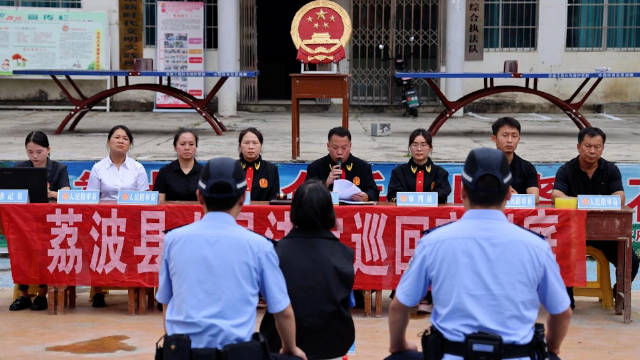
An aerial view of the container terminal of Lianyungang port, east China's Jiangsu province, on June 26, 2024. Launched in May 2014, the China-Kazakhstan (Lianyungang) Logistics Cooperation Base is the first entity project inaugurated under the Belt and Road Initiative. [Photo/Xinhua]
China-Central Asian ties have come a long way since diplomatic relations were established in 1992, with the latest engagement reflecting robust economic engagement and burgeoning political trust. Nowhere is this more evident than in the three decades of cooperation that can be seen as strategic, people-centric and culturally binding.
Consider the significant economic aspects of China's historic relationship with Central Asia. The Belt and Road Initiative (BRI) was launched in 2013, and since then billions in win-win infrastructure development investments have propelled China and Central Asia's shared pivot toward regional connectivity. Critical BRI projects such as the multibillion dollar railway link between Central Asia, China and Europe and the second phase of the China-Tajikistan Highway offer a clear-eyed view of global trade connectivity ambitions.
On the one hand, sustained investments in crucial infrastructure over the years have helped Central Asia boost its market access and enhance its capacities for infrastructure self-sufficiency. This includes the wide-ranging, multimodal Trans-Caspian International Transport Route (TITR), which leverages road-and-rail logistics to link China's eastern port of Lianyungang through Kazakhstan, the Caspian Sea, Azerbaijan, Georgia and Europe. Given Beijing's investment in facilitating the TITR's expansion, it is a signature contribution to promoting East-West connectivity among landlocked Central Asian states.
On the other hand, Beijing and Central Asia's strong resolve to deepening high-quality BRI partnerships has steered project engagements into high-growth areas. This includes a surge in greener BRI investments to accelerate Central Asia's energy transition. For instance, new energy cooperation continues to reach record highs as Chinese companies such as BYD, Geely and BAIC expand their NEV footprint in the region, spurring employment and bolstering broader national energy targets. Closer alignment between the BRI and national development strategies of Central Asian nations puts future impact into perspective, demonstrating the high complementarity between China and regional economies. At the China-Central Asia Summit last year, the Xi'an Declaration was issued, stating: "The parties are unanimous that the development of fruitful multifaceted cooperation between the states of Central Asia and China meets the fundamental interests of all countries and their peoples."
Stronger synergies in infrastructure development, energy, agriculture and industrial cooperation are a given as the BRI intersects with Kazakhstan's Nurly Zhol economic policy, Kyrgyzstan's National Development Program, Tajikistan's National Development Strategy, Turkmenistan's Great Silk Road Revival Strategy and the New Uzbekistan Development Strategy.
Interestingly, considerable growth in trade is another major hallmark of Sino-Central Asian cooperation over the decades. Beijing's trade with Kyrgyzstan, Uzbekistan and Kazakhstan clocked double-digit increases in the first four months of this year, while China's aggregate trade with Central Asian economies bordered on $90 billion last year. Through firm political support, there are ample prospects for scaling up multisector trade to ensure the cooperation benefits all sides.
Earlier this month, China and Kazakhstan announced a new goal of doubling two-way trade at an early date, setting an example for broader Sino-Central Asian relations. Moreover, for a country that has resolved to develop its green economy as a central pillar of its economy, Kazakhstan demonstrates the upsides of increased new energy cooperation with Beijing. For instance, Chinese companies continue to broaden their footprint in the country's green transition pivot, increasing the likelihood of Kazakhstan meeting its renewable energy target of 15% by the end of this decade.
One of the signature strengths of Sino-Central Asian ties is the unwavering commitment to true and representative multilateralism. Consider the fact that more than two decades on, the Shanghai Cooperation Organization (SCO) continues to position Central Asia as the core part of the grouping. Under the SCO's multilateral framework, Beijing and Central Asian allies have been able to cooperate more closely on combatting terrorism, separatism and extremism. Consultative meetings and dialogue mechanisms have also blossomed over the decades, making China and Central Asian countries more responsive to regional security interests, including through the SCO's Regional Anti-Terrorist Structure.
Today, there remains ample space for deeper political engagement at major forums: The Secretariat of China-Central Asia mechanism was established in Xi'an, and continues to serve as a major platform to implement the outcomes of the landmark 2023 China-Central Asia Summit. China says it stands ready to work with Tajikistan and other relevant parties to continuously improve and strengthen the China-Central Asia mechanism, and push for more tangible results in China-Central Asia cooperation. Sustained investments in these intergovernmental structures have shaped favorable understandings of each other's distinct development needs, and stand to boost complementarities in strategic partnerships. China and Uzbekistan's multiyear plan to bolster their comprehensive strategic partnership (2023-2027) is just one of many cases in point.
Interestingly, China's cooperation under the SCO has also proven pivotal to advancing agriculture in Central Asia. China established a demonstration base for agricultural technology exchange in Shaanxi province, and has organized hundreds of experts to increase Central Asia's exposure to cutting-edge agricultural technologies. Kazakhstan's yields have increased by 60% on the back of these industrial exchanges, while mutually beneficial fields such as traditional agricultural trade and seed technology continue to gain traction.
China's desire to offer more options in its local currency trade with Central Asian states is also a major step forward as it focuses on improving the competitiveness of each country's local economy. As early as 2012, China's total trade volume with Central Asian states increased by 100-fold since diplomatic ties were established in 1992. Given Central Asia's rapidly growing agricultural and industrial cooperation, the countries' agreement on increased alternative payment settlements to support local trade and withstand any external pressures is a welcome sign.
Ultimately, three golden decades of multifaceted cooperation have given rise to a golden era of China-Central Asia cooperation. The extent of economic, political and developmental common ground is emblematic of a relationship that has stood the test of time.
The author is a foreign affairs commentator, author and recipient of the Fulbright Award.
Opinion articles reflect the views of their authors, not necessarily those of China.org.cn.
Follow China.org.cn on Twitter and Facebook to join the conversation.ChinaNews App Download















